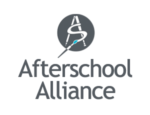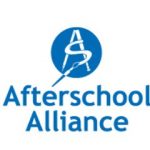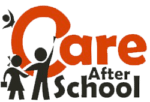General Research
This study from The National Center for Education Statistics within the Institute of Education Sciences provides a national profile of various types of formal after-school programs physically located at public elementary schools in 2008. These programs included stand-alone programs that focus primarily on a single type of service (e.g., only day care) and broad-based programs that provide a combination of services such as academic enrichment and cultural activities.
With support from MetLife Foundation, the Afterschool Alliance has published “Afterschool Innovations in Brief”, a compilation of four issue briefs examining critical issues facing children, schools and communities, and the vital role after-school programs play in addressing these issues. (May 2008)
Students with special needs may not always receive the resources they need to reach their full potential during the school day, but after school programs can offer additional activities more tailored to the individual needs of children. This brief examines the valuable role after school programs can play in the life of a child with special needs.
Respectfulness, positive behavior, self-confidence, and an interest in school are just a few traits kids can develop through participation in after school programs. Check out this issue brief to learn more about ways after school can help build character.
This report, developed by the National Center for Education Statistics, contains statistics that address important aspects of the lives of youth, including family, schooling, work, community, and health. The report focuses on American youth and young adults 14 to 24 years old, and presents trends in various social contexts that may relate to youth education and learning.
The past year presented the afterschool community with many obstacles, most notably the economic crisis, but also many opportunities for growth. The year 2008 saw the celebration of ten years of 21st CCLC, one of the largest Lights On Afterschool rallies ever was held, and the Afterschool Alliance published the stories of so many whose lives have been transformed by afterschool in America’s Afterschool Storybook.
In 2007, funding for 21st Century Community Learning Centers increased for the first time since 2002. New research and polls show enduring and far-reaching support. More community leaders and policy makers are pledging their support for afterschool, and new dedicated state level funding streams are cropping up across the country. These positive developments, and more, as well as critical challenges that remain, are discussed in “2007 Afterschool Year in Review.” (January 2008)
This study finds that elementary students who were randomly assigned to attend the 21st Century Community Learning Centers after-school program were more likely to feel safe after school, no more likely to have higher academic achievement, no less likely to be in self-care, more likely to engage in some negative behaviors, and experience mixed effects on developmental outcomes relative to students who were not randomly assigned to attend the centers.
Released in June, Uncertain Times 2009 finds that just as children in their communities need more help, afterschool program leaders across the country say they are being forced to increase fees and reduce staffing, activities and hours to cope with budget cuts and rising costs. Nearly all respondents to a survey of afterschool programs (95 percent) say the recession is affecting their communities, with 60 percent seeing more kids going hungry or families struggling to provide food for children, and half seeing increased homelessness. Yet afterschool programs are unable to provide as much help as children need because their budgets are down. Eighty-six percent of respondents say children in their communities need afterschool care and are unable to access it.
Funding Insecurity Puts Afterschool Programs at Risk – An August-September 2006 survey of more than 2000 afterschool programs examining issues related to funding and accessibility. Includes state level data where available.
The survey, conducted online in July 2007, shows the high level of importance parents place on afterschool programs. Eight out of 10 (80 percent) parents say that their child needs a safe, positive place to go to afterschool and parents said their children want the same (82 percent). Based on responses from 603 parents, it’s clear that parents believe afterschool programs are critical in steering kids away from crime and improving academic performance and overall well-being.
This publication looks at the sustainability of 21st Century Community Learning Centers. It discusses ways in which grantees and policymakers alike can promote sustainability within these programs.










